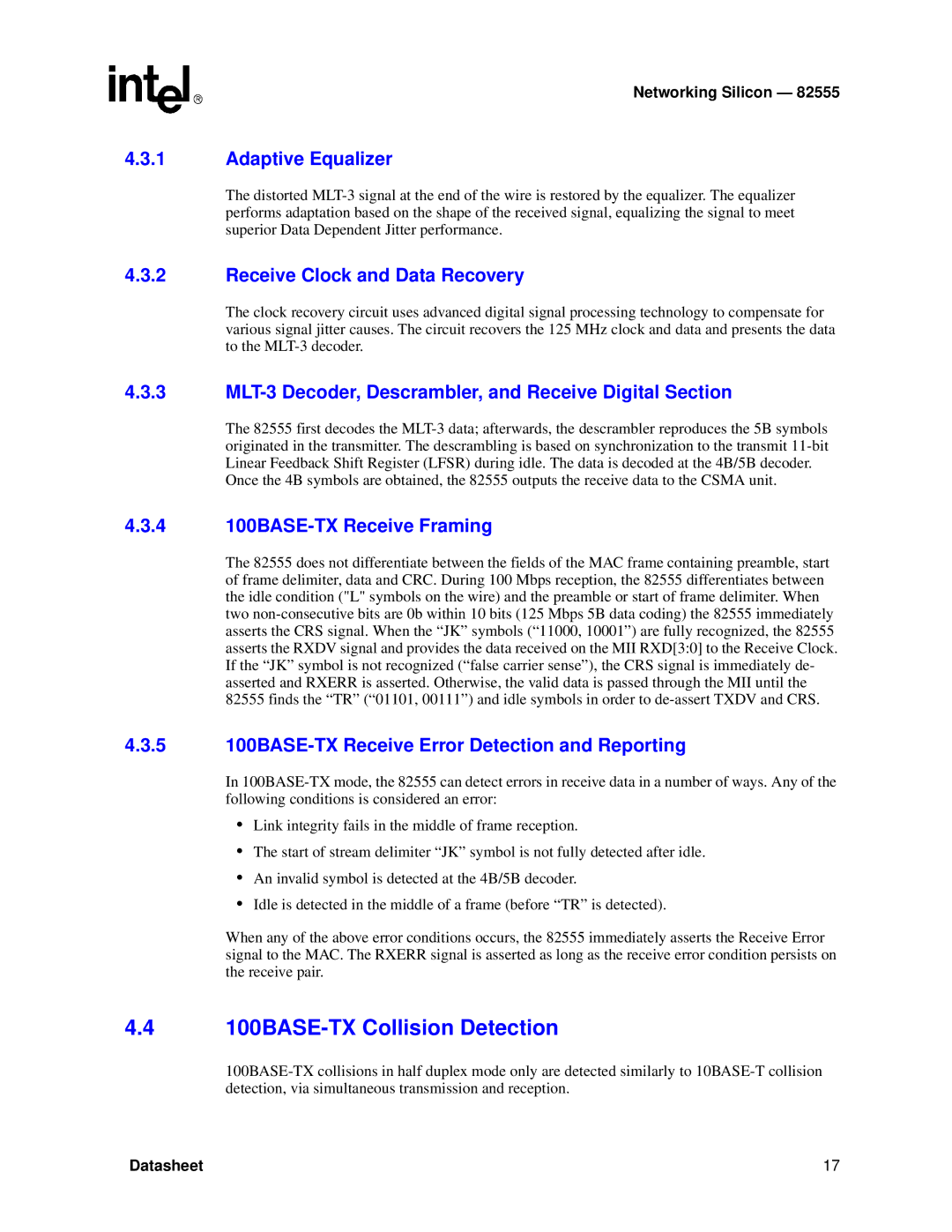Networking Silicon — 82555
4.3.1Adaptive Equalizer
The distorted
4.3.2Receive Clock and Data Recovery
The clock recovery circuit uses advanced digital signal processing technology to compensate for various signal jitter causes. The circuit recovers the 125 MHz clock and data and presents the data to the
4.3.3MLT-3 Decoder, Descrambler, and Receive Digital Section
The 82555 first decodes the
Once the 4B symbols are obtained, the 82555 outputs the receive data to the CSMA unit.
4.3.4100BASE-TX Receive Framing
The 82555 does not differentiate between the fields of the MAC frame containing preamble, start of frame delimiter, data and CRC. During 100 Mbps reception, the 82555 differentiates between the idle condition ("L" symbols on the wire) and the preamble or start of frame delimiter. When two
4.3.5100BASE-TX Receive Error Detection and Reporting
In
•Link integrity fails in the middle of frame reception.
•The start of stream delimiter “JK” symbol is not fully detected after idle.
•An invalid symbol is detected at the 4B/5B decoder.
•Idle is detected in the middle of a frame (before “TR” is detected).
When any of the above error conditions occurs, the 82555 immediately asserts the Receive Error signal to the MAC. The RXERR signal is asserted as long as the receive error condition persists on the receive pair.
4.4100BASE-TX Collision Detection
Datasheet | 17 |
